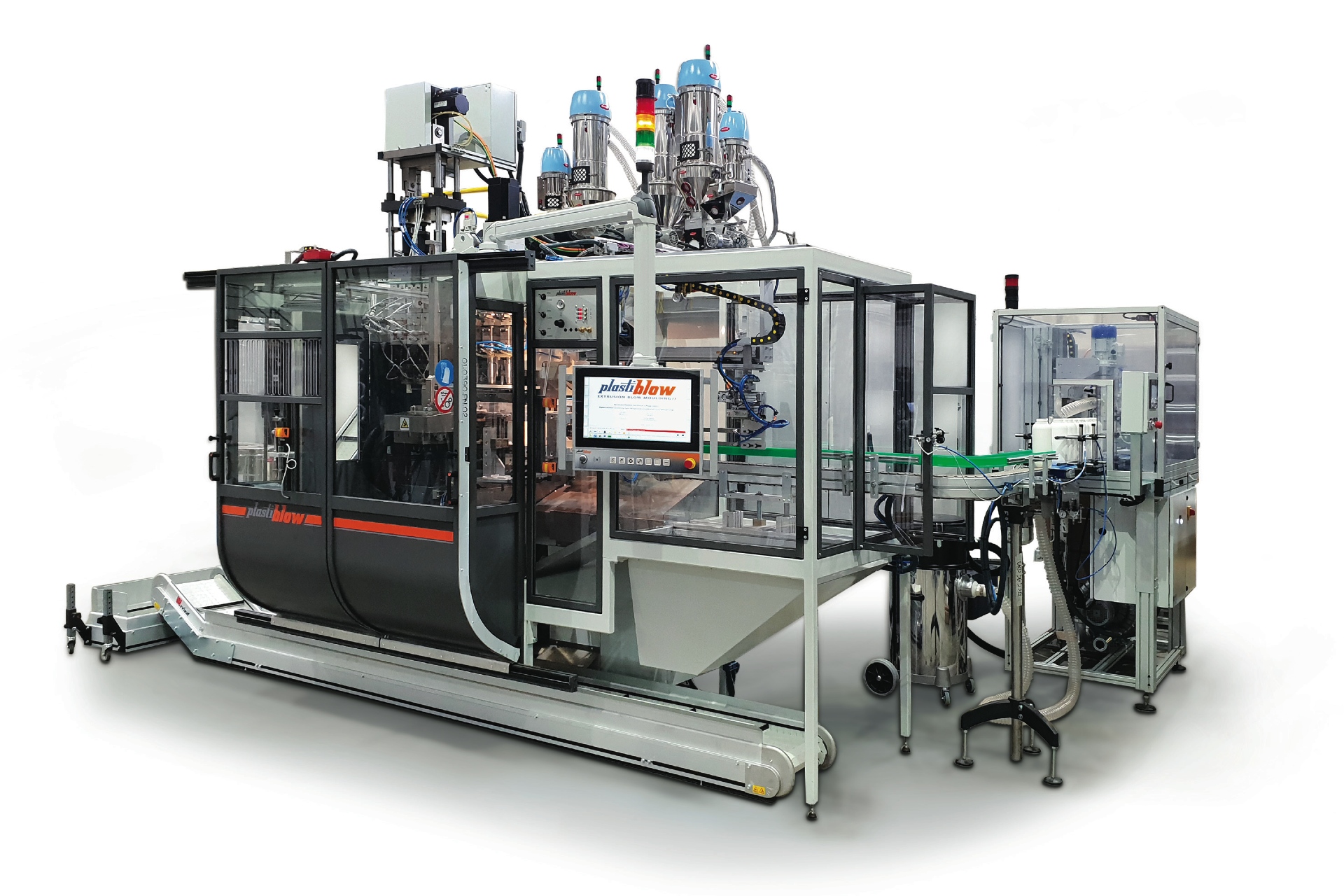Circular economy and sustainable packaging. Plastiblow's commitment.

Also from manufacturers of extrusion blow molding machines comes an important contribution for the protection of the environment through the use of recycled plastic materials. From waste to new resource.
Europe bans the use of single-use plastic products. International organizations have long talked about the risks associated with the excessive use of this material in terms of impact on the environment: for oil consumed, for emissions of greenhouse gases (GHG). However, plastic plays a key role in the protection and preservation of products, from production to consumption, in every field. Resistant, safe, hygienic, aseptic, light, durable and recyclable, plastic maintains its important function in the entire supply chain, if we consider that in Europe alone, more than 50% of goods in circulation use plastic to deliver to consumers intact, fresh, protected products.
A virtuous mechanism
Awareness of these important aspects, which has been affecting the sector for decades, has set in motion a virtuous mechanism that has led professionals to create low-energy-consumption machines and better packaging containers, compared to a long time ago. One fact above all: the weight and volume of the containers has been significantly reduced, even by 30% less. An aspect that saves the consumption of tons and tons of plastic material. Without neglecting the importance of a virtuous recovery and recycling policy set in motion by many countries.
Plastiblow, pioneer in low consumption, now also in the use of recycled materials
Plastiblow, among the first in the sector to develop electric machines for low energy consumption extrusion blow molding, has long been committed to the reduction of the use of virgin plastic, because it has developed multilayer co-extrusion technologies capable of processing more recycled materials for the production of new containers.
Plastiblow is proactive for more efficient packaging solutions
More and more customers are looking for solutions for smarter and more efficient packaging that save energy and reduce the consumption of raw materials. The fundamental combination for being virtuous is: the less material I use for the production of the containers, the less energy I consume. Reducing weight, cutting waste, using more recycled materials, absorbing less energy, are objectives that Plastiblow has made its own with a competence made available to its customers around the world.
Plastiblow can advise customers on how to reduce weight while maintaining the physical and mechanical properties of the containers. It can modify or study the design of the containers according to the forming process in the mold. It can design the configuration of multiple extruders to reach up to 7 layers of material, as in the case of the food sector. It can finely control the process parameters that can be reached by its machines to obtain the suitable conditions for a reduction in weight and waste.
Highly reliable electric co-extrusion blow molding machines
Plastiblow machines offer repeatability of results thanks to the reliability of the servo drive movements and the precision of the controls.
The design and construction of the machines, characterized by the quality of the technical solutions applied, some of which covered by patents, also includes lower maintenance costs for the use of particularly reliable and precise mechatronic systems, as well as control systems for remote diagnosis of processes from an Industry 4.0 perspective.
Multilayer co-extrusion as a plastic saving solution. An ambitious goal but achievable for Plastiblow
The scenario involving the rational and responsible use of plastic, recycled materials, the possibility of reusing "post-consumer" resin within the production process, for Plastiblow it is already a reality, because it offers solutions for the production of single-layer or multi-layer containers with the use of post-consumer recycled plastic (PCR).
Thanks to Plastiblow technology it is possible to obtain a final product where the recycled material does not interact with the content because it is enclosed between two layers of virgin material and where the external appearance remains aesthetically unchanged. The thickness of the central layer, approx. 60-70% regardless of the total thickness of the container, is made of recycled plastic. Inner and outer layers are made of virgin materials, normally high density polyethylene, with a thickness of 10-20%, therefore extremely low. The thickness of the layers of virgin material is fundamental for the optimization of two opposite needs: on the one hand, the desire to reduce the amount of virgin material used, on the other hand, the necessity to guarantee a good and homogeneous coverage to give the final product a traditional aesthetic appearance. Furthermore, an adequate thickness of the internal layer allows to maintain high welding characteristics and prevents the elements present in the layer of recycled material from contaminating the product.
Tests and experiments confirm this
A series of tests carried out in collaboration with GCR Group, a leader in Europe and the global reference for the development of eco-sustainable compounds for the plastics sector, performed on Plastiblow electric machines, confirmed that the versatility in the use of recycled materials is optimal. Even with the use of alternative raw materials, Plastiblow machines maintain cycle times, speed and final result of the final products unchanged.
Increase in productivity, reduction in energy consumption, increase in the percentage of recycled material: Plastiblow's contribution to the circular economy in sustainable packaging production has been largely achieved.

 Material Dosing and Mixing
Material Dosing and Mixing Products Handling and Automation
Products Handling and Automation

